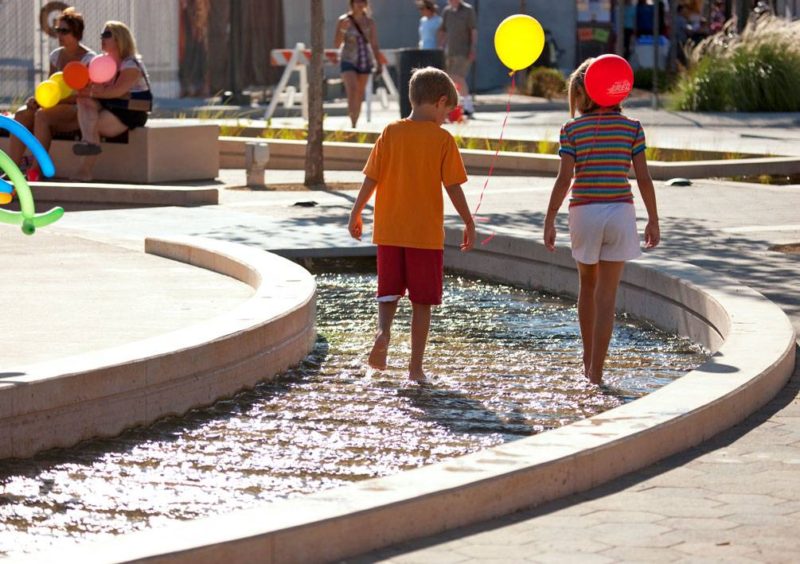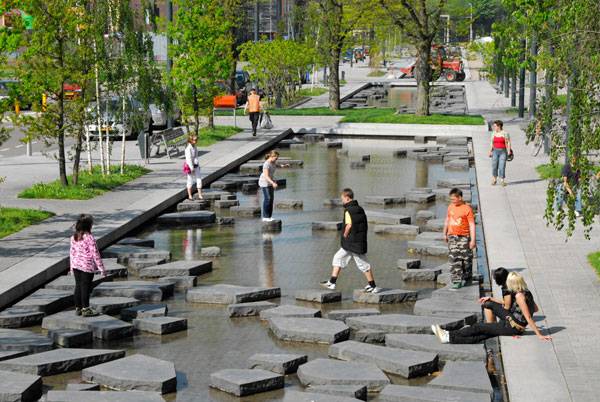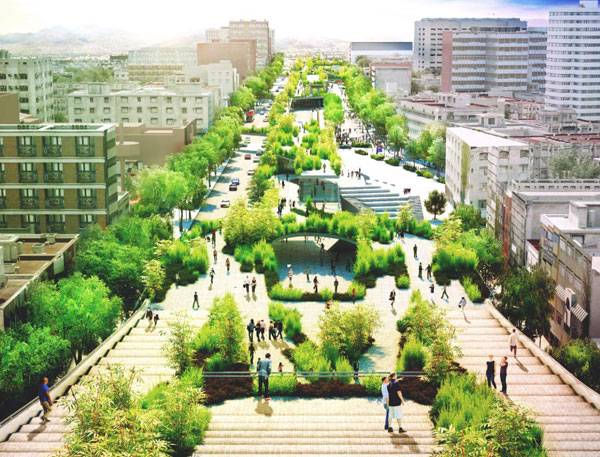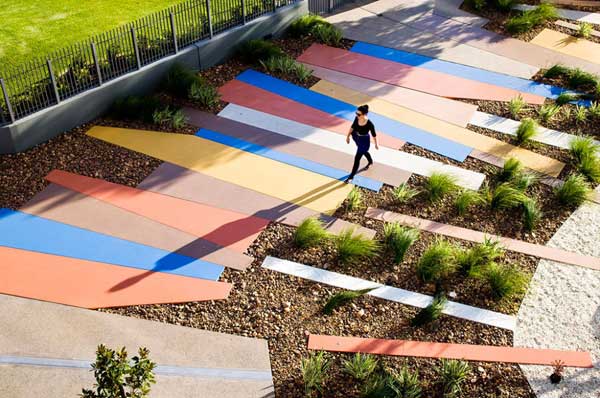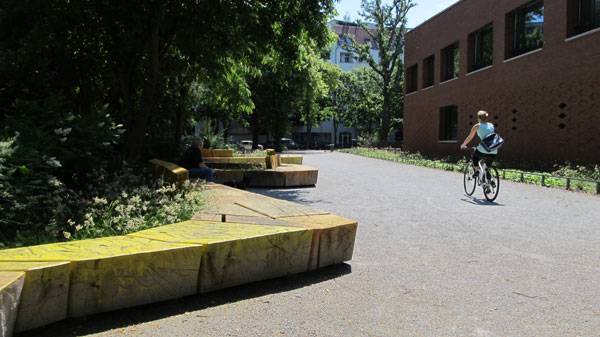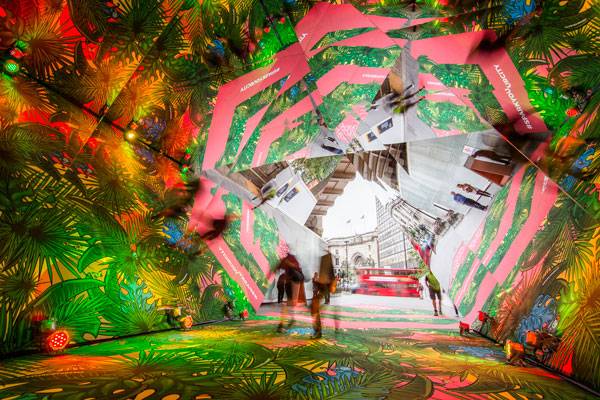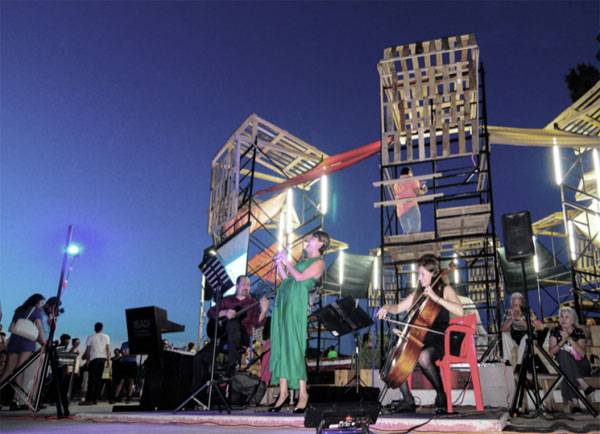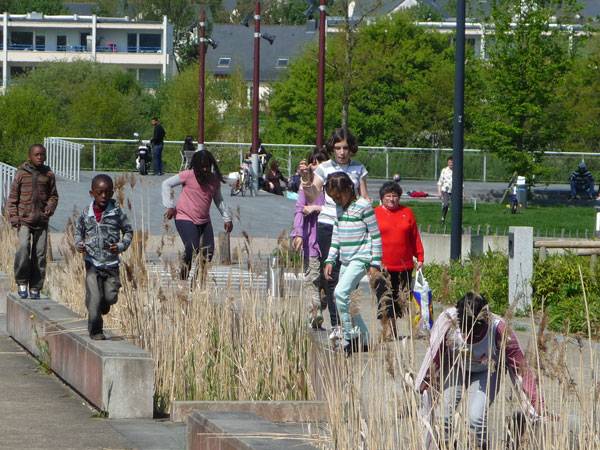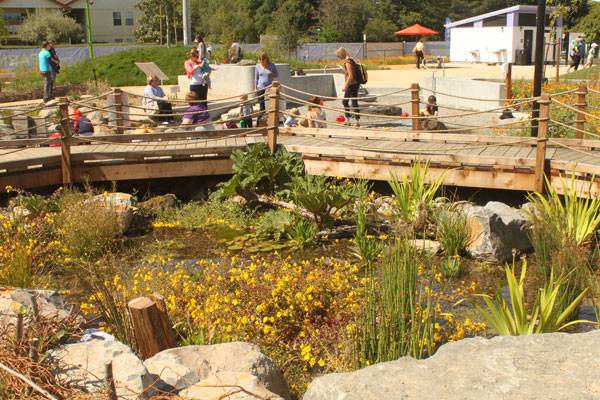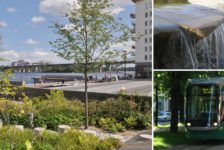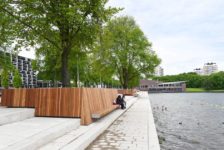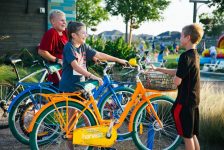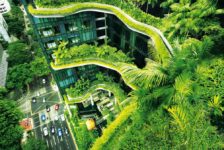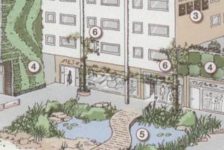Article by Cristina Ferrara We take a look at 10 projects for children that are great at meeting their needs and yet they are not playgrounds. Every time, I wonder what makes a project a “perfect” project, particularly for children. And every time, the answer is the same: It’s all about whether — and how — the kids are interacting with the designed space, and if they are using it in the way the designer intended. If the user is in the architect’s mind since the beginning, the project should be successful and the results brilliant. Do outdoor spaces for children fit this bill? Are they really child-friendly? In other words, is the final user I was thinking about during my design process now using the space the way I planned?
10 Great Projects for Children
In this article, we won’t consider playgrounds. Instead, we will look at more generic public spaces, such as squares, parks, streets, and even intersections. We have decided to take inspiration from the world’s top 10 projects for children: 10. Roombeek The Brook, by Buro Sant en Co, in Enschede, The Netherlands We don’t often think of a street as a place to live. But it happened in Enschede. Next to the roadway is a high-quality sidewalk that inspires children, adults, and seniors to spend time there enjoying an attractive water element. The brook along with the high density of benches that face both the street and the pedestrian space, provides a good presence of greenery that ensures shadow. Children really like jumping on the stepping stones and, since the water tank is not deep, parents are not afraid to let their children run here and there on the blocks. This project creates a perfect urban melting pot for all ages.
9. Cultural Corridor Chapultepec, by FR-EE, in Mexico City, Mexico Right in the middle of Mexico City, the Cultural Corridor Chapultepec is a meeting point for families and children. Different activities are spread out along the 1.3 kilometers of reinvented urban space, on two different levels. This urban, green, linear park hosts fountains and water elements, ping pong tables, workshop spaces for children, music arenas, and many other activities that can be shared by children and their parents. In fact, we have to consider that children usually are accompanied by adults, so what’s better than a multi-activity place, wide and safe, right near houses, offices, and public services such as transports?8. The Peninsula at Burswood, by Hassell Landscape Architects cooperating with artist Stuart Green, in Perth, Western Australia
Cooperation in projects is one of the most important things in order to obtain much more than expected results. This is the case with The Peninsula at Burswood, by Hassell Landscape Architects, cooperating with artist Stuart Green. This residential project provides families with a chance to enjoy green areas and outdoor spaces near home. It really embraces the needs of inhabitants by giving them community recreation areas that facilitate interaction. In particular, “The different types of vegetation on the huge roundabout also allow various activities, such as a weekend family picnic in the shadow or (a) spontaneous game of hide-and-seek among neighborhood children next to shrubs and perennials,” writes Sophie Thiel in her article for Landscape Architects Network. And it is true: Colorful and diversified materials; free spaces where children can run, play, and meet other children; and shady places where parents can relax make for a perfect, easy, and enjoyable vacation away from the everyday domestic environment.
7. KALA – Playground and Green Space in Berlin-Friedrichshain, by Rehwaldt LA, in Dresden, Berlin, Germany A clear example of what was in the planner’s mind is the Playground and Green Space in Berlin-Friedrichshain. It takes place in a public urban square where users of different ages are the clients. In particular, the project wants to stimulate children’s activity by developing their citizenship and self-consciousness. The environment invites kids to find friends and to get tuned in with the surroundings. The key words of the project: simplicity of shapes and spaces. Two different areas are dedicated to elders and children, linked and permeable: the Meeresinsel (Island in the Sea), a specific playground with natural play areas that stimulate creativity in kids; and the Erdeninsel (Isle on the Earth), which has an urban furniture design that is colorful, attractive, and smart for children. It’s right beside the elementary school, and its green sensation provides a very pleasurable walk.6. Redevelopment of the Eastern Shore of Paprocany Lake, by RS+, in Tychy, Poland
Natural elements always attract people, but this project wants to emphasize the contact with natural surroundings. It’s the walkway along the Paprocany Lake, providing a rich diversity of visual perspectives and places to explore, inviting adults and children to move and discover recreational areas as they travel on pedestrian or cycle lanes. Children are part of nature, and here they can explore the world around them with friends or family. Different seats shape the space: massive wooden benches, part of a tribune in the promenade; the modular and geometrical ones inserted in the open natural grounds; and finally a funny blue net stretched along the wooden walkway at appropriate gaps. This precious and attractive element especially appeals to children who like to lie down there. Basic things usually have multiple uses, something that isn’t possible with pre-established forms. The spaces are linear, quiet, and involving, and the project is a place of movement, integration, and reconnection with nature.
5. Spark Your City, by Kipling, in Sutton Walk, London, England It is quite common to passively live in urban spaces and to walk in a city with no particular emotions as you pass by buildings, cross streets, and stroll through squares. This project by Helen Skelton took place in London following the idea of “Spark Your City”, a global movement coordinated by the luggage brand Kipling to spark joy in everyday city life. Skelton wanted to create an urban jungle through a kaleidoscope of images, variegated colors, and shapes amidst the concrete and bricks of city life. Everyone from everyday users to tourists loved the kaleidoscopic, adventurous tunnel she created. Adults and youngsters can freely laugh, be joyful and enthusiastic, happy like a child in this installation, able to let childlike imagination fly to other worlds and universes. The excitement of walking along this jungle makes people eager to explore more. Colors, images, mirrors: This is definitely an interactive, adventurous playground for children, and it remembers the powerful meaning of conducting a happy life from a kaleidoscopic point of view. 4. Urban Spa, by students of ISAD, along with PKMN architects, in Chihuahua, Mexico A big challenge to face for this project was solving some problematic, socially extreme situations related to drug trafficking, derelict streets, and abandoned parks. This is the reason why students, architects, and local residents were all involved in the design process for the creation of the Urban SPA, a temporary, interactive installation at Parque Urueta in the city center. The project’s aim was to revitalize an old fountain, and it widely involved the city in joining the project and agreeing to install a water pump that has brought a new life to the water element. The place changed its outfit and brought the area new life. A central platform allows children to play with sprinkling water, and shade is provided by nine large scaffolding towers with small viewpoints. It is the perfect stage for daily activities such as zumba and yoga classes, and it bustles with shopping kiosks, corn stalls, nighttime palettes, performances, and concerts. People really live in and enjoy the place. They are part of that skyline, and they feel like the protagonists of a newly re-appropriated space. This makes the project really successful! WATCH >>> TALLER DEL DESIERTO 2015 _ ISAD3. Uptown Normal, by Hoerr Schaudt, in Normal, Illinois, USA Children playing in a circle. Sounds strange, but it is possible in this central business district halfway between the two major U.S. cities of Chicago, Illinois, and St. Louis, Missouri. “The Circle gives Normal a public green with a strong sense of place – particularly important in a community with no distinctive natural features and a better-known sister city,” designer Hoerr Schaudt says. The project recycled and reused materials and natural elements. In the center is a small park with a big grass square, seats, shade, and a water feature. Thanks to the recycling process, storm water from several streets is collected and stored in a 75,000-gallon underground cistern. Now, what is more attractive than water, and in particular recycled water? Adults and children are led to understand the importance of not wasting natural resources. Don’t you think this is a very intelligent, funny, and clever way to design a new urban space, with multiple functions and that wink to sustainability?
2. St. Jacques Ecological Park by Atelier des Paysages- Bruel Delmar Contact with nature, seasonally changing landscapes, and wide species with multiple-use interpretation: this is the St. Jacques Ecological Park in northwestern France. A deep connection between people and nature embraces the concept of biophilia by giving children the direct experience of nature and ecology through exploration. This project predicted the re-naturalization of the area in order to let it seem like a wild place. This aspect meets the needs of children, especially since the design includes smooth lines and simple hardscape features, with low impact on the surroundings and on the perception of the space. The park has phyto-purification areas with specific plants, a strong presence of water, and decks, bridges, and wide open fields that make room for users’ imagination. “St. Jacques does not conform to the fixed image of a typical park, but aims to be a permanent laboratory for the protection and development of its ecosystems,” According to Atelier Des Paysages Bruel-Delmar.1. Mary’s Garden, Children’s Museum of Sonoma County, by BASE Landscape Architecture, Santa Rosa, California, USA
Not a playground. Not a science museum. Not an adventure park. It is all of these together. Mary’s Garden is child-size, big space with all kinds of attractions, colors, natural elements, and specific goals. The museum offers a perfect mix of activities, play, opportunities for socialization, and educational processes. Children are the protagonists, not passive like in common playgrounds or recreational areas. In this powerful space, they are actively able to experiment, choose, and try new experiences. They can be involved in the plant-growing process by planting, feeding, and watering vegetation. They can fish, run, and learn from nature. They can be creative and independent, free to move alone or with their family. The child-friendly design offers shallow streams and pools, funny constructions, animal-shaped toys, and blooming fields where the dreams of every child to race inside comes true.
Projects for Children
Children should be free to be children, with no restrictions. Restrictions are usually applied to children because spaces are not designed for their size and capabilities. They are too high, too big, too dangerous, too risky, too crowded, too fast, too deep … so much “too”! In this case, the Children’s Museum is dedicated to slower legs, shorter heights, creative minds, faster imaginations. And this is not bad for adults, either: They should remember what it’s like to be a child, how interesting and exciting it is. And this place knows it and wants it.
Keep the Children in Mind
When drawing, when thinking, when designing — try to think from a child’s perspective. The results will be surprising, and adults and children will enjoy your choices. Your pencil and your drawing ink might influence society to take a different approach to public space. What would you recommend in designing for children? Leave your answer below in the comments!
Recommended Reading:
- Becoming an Urban Planner: A Guide to Careers in Planning and Urban Design by Michael Bayer
- Sustainable Urbanism: Urban Design With Nature by Douglas Farrs
Article by Cristina Ferrara
Published in Blog


